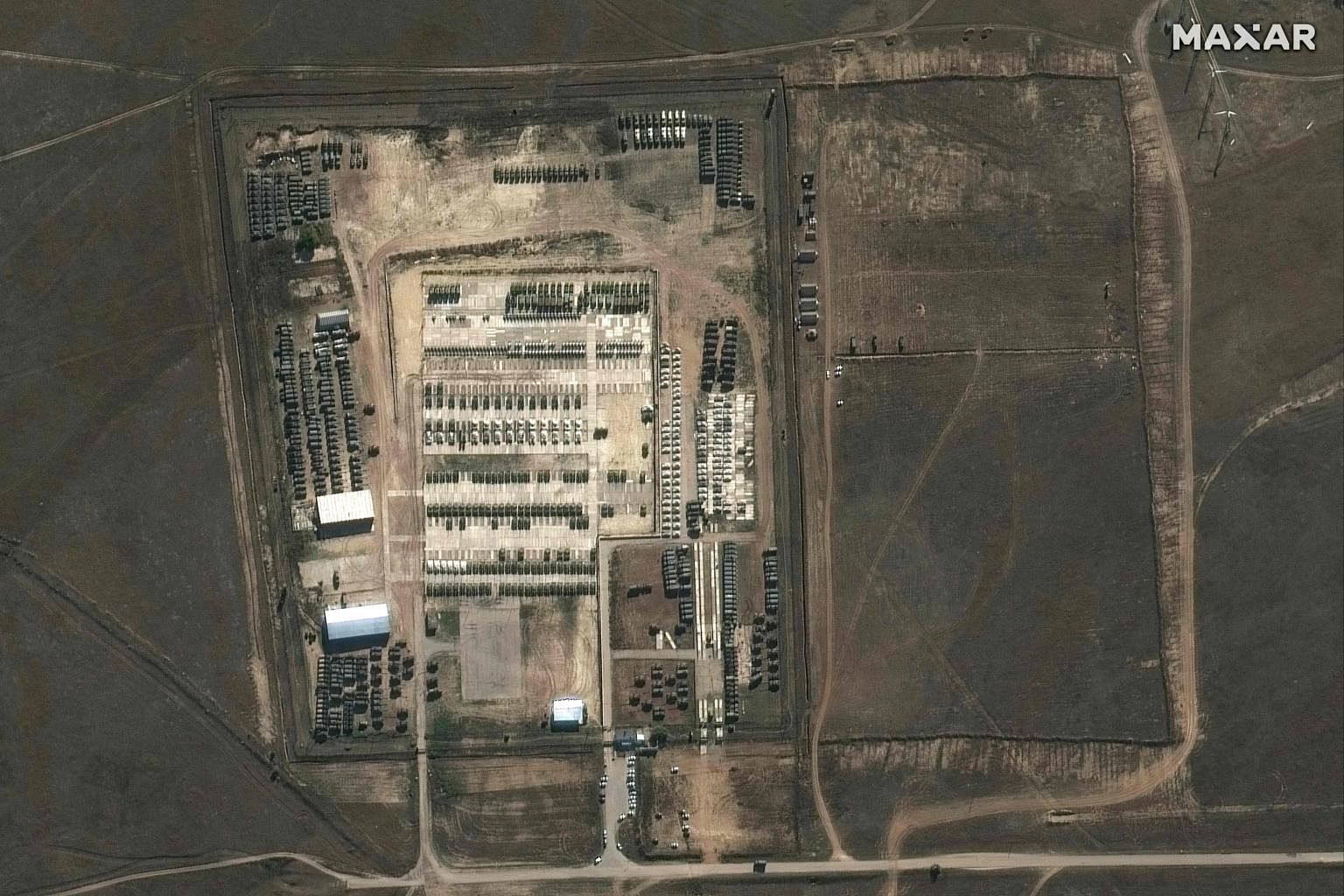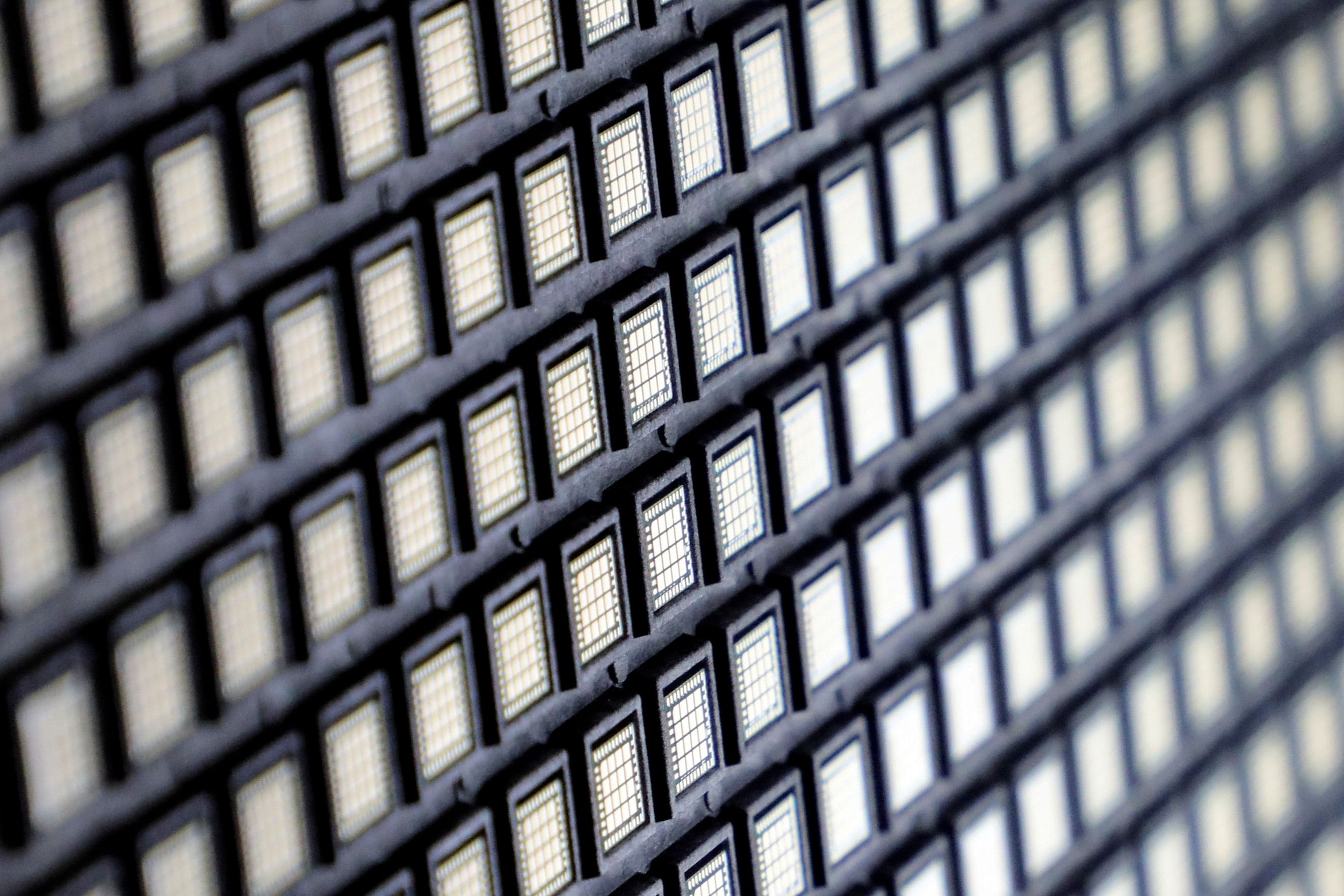WASHINGTON (NYTIMES) - The Biden administration and its allies are assembling a punishing set of financial, technology and military sanctions against Russia that they say would go into effect within hours of an invasion of Ukraine, hoping to make clear to President Vladimir Putin the high cost he would pay if he sends troops across the border.
In interviews, officials described details of those plans for the first time, just before a series of diplomatic negotiations to defuse the crisis with Moscow, one of the most perilous moments in Europe since the end of the Cold War. The talks begin Monday (Jan 10) in Geneva and then move across Europe.
The plans the United States has discussed with allies in recent days include cutting off Russia's largest financial institutions from global transactions, imposing an embargo on American-made or American-designed technology needed for defence-related and consumer industries, and arming insurgents in Ukraine who would conduct what would amount to a guerrilla war against a Russian military occupation, if it comes to that.
Such moves are rarely telegraphed in advance. But with the negotiations looming - and the fate of Europe's post-Cold War borders and Nato's military presence on the continent at stake - President Joe Biden's advisers say they are trying to signal to Mr Putin exactly what he would face, at home and abroad, in hopes of influencing his decisions in coming weeks.
The talks Monday will be led by the deputy secretary of state Wendy Sherman, an experienced diplomat who negotiated the 2015 nuclear agreement with Iran. Russian officials are expected to press their demands for "security guarantees," including prohibiting the deployment of any missiles in Europe that could strike Russia and the placement of weaponry or troops in former Soviet states that joined Nato after the fall of the Berlin Wall.
Mr Putin is also demanding an end to Nato expansion, including a promise that Ukraine could never join the nuclear alliance.
While the Biden administration has said it is willing to discuss all Russian security concerns - and has a long list of its own - the demands amount to a dismantling of the security architecture of Europe built after the Soviet Union's collapse.
On Wednesday, members of the Nato alliance will meet with Russia in Brussels. The next day in Vienna, Ukrainian officials will also be at the table, for the first time, for talks at the Organisation for Security and Cooperation in Europe. But with 57 members, that group is so large that few expect serious negotiations.
US diplomats worry that after the whirlwind week, the Russians could declare that their security concerns are not being met - and use the failure of talks as a justification for military action.
"No one should be surprised if Russia instigates a provocation or incident," Secretary of State Antony Blinken said Friday, and "then tries to use it to justify military intervention, hoping that by the time the world realises the ruse, it'll be too late."
This time, he said, "we've been clear with Russia about what it will face if it continues on this path, including economic measures that we haven't used before - massive consequences."
That warning, however, is an unspoken acknowledgment that the Obama administration's response in 2014, when Mr Putin last invaded parts of Ukraine, was too tentative and mild. At that time, Mr Putin surprised the world by annexing Crimea and fuelling a grinding proxy war in eastern Ukraine.
Now, US officials say they are trying to learn from their past mistakes.
An internal review of those actions, conducted by the White House in recent weeks, concluded that while Obama-era sanctions damaged Russia's economy and led to a sell-off of its currency, they failed at their central strategic objective: to cause so much pain that Mr Putin would be forced to withdraw.
Nearly eight years later, Russia still holds Crimea and has ignored most of the diplomatic commitments it made in the negotiations that followed, known as the Minsk accords.
Those sanctions started with actions against some smaller Russian banks and individuals directly involved in the invasion.
Virtually all of the sanctions - and additional measures imposed after Russia's interference in the 2016 election and after the SolarWinds cyberattack in 2020 that sabotaged computer programmes used by the federal government and American companies - remain in place.
But there is scant evidence that they have deterred Mr Putin, who began building up forces near the Ukrainian border just as Mr Biden announced his response to SolarWinds this past spring.
When asked recently whether he could point to any evidence that the Russians were deterred by recent sanctions, a senior aide to Mr Biden paused a moment and then said, "No, none."
Rather than start with moves against small banks and on-the-ground military commanders, officials said, the new sanctions would be directed at cutting off the largest Russian financial institutions that depend on global financial transfers.

The plan was described by one official as a "high-impact, quick-action response that we did not pursue in 2014."
The technology sanctions would target some of Mr Putin's favoured industries - particularly aerospace and arms, which are major producers of revenue for the Russian government.
The focus would be on Russian-built fighter aircraft, anti-aircraft systems, anti-satellite systems, space systems and emerging technologies where Russia is hoping to make gains, like artificial intelligence and quantum computing.
Similar export controls have been surprisingly effective against China's leading producer of cellphones, Huawei, which for a while was among the top providers of smartphones to the world. That part of its business has all but collapsed in the past year because it cannot obtain advanced chips.
But the Russian economy bears little resemblance to China's, and it is not clear that it is equally vulnerable to an embargo of semiconductors and other microelectronics that are critical to Chinese manufacturing.
There are other options under consideration that go well beyond merely banning the sale of computer chips. In one additional step, according to US officials, the Commerce Department could issue a ruling that would essentially ban the export of any consumer goods to Russia - from cellphones and laptop computers to refrigerators and washing machines - that contain American-made or American-designed electronics.
That would apply not only to American makers, but also to European, South Korean and other foreign manufacturers that use American chips or software.
Unlike China, Russia does not make many of these products - and the effects on consumers could be broad.

But a senior European official said there was still a debate about whether the Russian people would blame Mr Putin, or the United States and its allies, for their inability to buy the goods.
While the Commerce and Treasury departments work on sanctions that would maximise America's advantages over Russia, the Pentagon is developing plans that have echoes of the proxy wars of the 1960s and '70s.
To underscore the potential pain for Russia, the chairman of the Joint Chiefs of Staff, General Mark Milley, spoke with his Russian counterpart two weeks ago and delivered a stark message: Yes, he said, you could invade Ukraine and probably roll over the Ukrainian military, which stands little chance of repelling a far larger, better armed Russian force.
But the swift victory would be followed, Gen Milley told Gen Valery Gerasimov, by a bloody insurgency, similar to the one that led to the Soviet retreat from Afghanistan more than three decades ago, according to officials familiar with the discussion.
Gen Milley did not detail to Gen Gerasimov the planning underway in Washington to support an insurgency, a so-called porcupine strategy to make invading Ukraine hard for the Russians to swallow.
That includes the advance positioning of arms for Ukrainian insurgents, probably including Stinger anti-aircraft missiles, that could be used against Russian forces.
After visiting Ukraine last month, Representative Seth Moulton, a former Marine officer, said that in his view, "We need to make any incursion by Russia more painful - Day 1 painful, not six months from now painful.
"We have a short window to take decisive action to deter Putin from a serious invasion," Mr Moulton said. "I worry our current deterrent tactics are responding to an invasion rather than preventing it."
One option likely to be discussed at Nato this coming week is a plan to increase, possibly by several thousand, the number of troops stationed in the Baltics and in southeast Europe.
On Friday, Mr Blinken again warned that if the Russians invade, Nato would deploy more forces along the borders between Nato nations and Russian-controlled territory.

